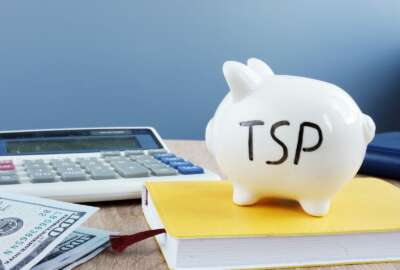
G fund: How much is too much?
Most experts would say it depends on your age, when you plan to retire, and, very important, your risk tolerance.
How much of your Thrift Savings Plan portfolio is invested in the treasury securities G fund? Too much or not enough? And what is that magic figure?
Most experts would say it depends, which is what experts nearly always say. It depends on your age, when you plan to retire, and, very important, your risk tolerance. Is “the end is near” your inner mantra?
Most people realize that the current bull market (10-plus years) can’t last forever, that based on past performance, it is years past the point when it will be hit with a “correction” of 20%-30% or more. The word “correction” is stock broker talk for a gut-churning drop in the value of your stocks and bonds account.
During the Great Recession of 2008-2009, hundreds of thousands of active and retired TSP account holders jumped out of the stock market-indexed C and S funds and into the G fund. Many planned to ride out the downturn and get back into the stock market, which has since soared — eventually. Some, maybe many, possibly most are still in the G fund waiting for the right time to return. And given the calendar and what’s going on in the nation, and the world, this might not be the best time to return, or leave. The rule is buy low and sell high, but it’s easier said than done.
What surprises many TSP observers is the high number of younger workers, many just starting what could be 30- to 40-year careers, who have such a high percentage of their retirement nest egg in G fund TSP. Although it is “safe” in the sense it never loses money, the fact that it often doesn’t keep pace with inflation means that, over time, retirees will lose out to inflation. That’s especially true in times of high inflation when annuities for Federal Employees Retirement System participants are subject to a diet-cost of living adjustment formula. In January 2020, retirees under FERS, the Civil Services Retirement System, Social Security and the military retirement will all get the same 1.6% COLA. But once inflation goes over 2%, which is much of the time, FERS retirees don’t get the full COLA. If the January catchup was 2.6%, FERS retirees age 62 and older would get only 2%. If the COLA was 3.6% percent they would get only 3%, and those younger than age 62 would get nothing.
Over time, during periods of even modest inflation, FERS retirees would lose purchasing power. And the G fund might not look so good.
The most recent report on the TSP said that while the participation rate in the TSP is up, which is good. But the average contribution deferral rate remained flat at 7.9%, meaning a lot of people aren’t maxing out in their accounts.
The report also said that TSP participants age 29 and younger “have a disproportionate percentage (24.8%) of their account balances in the G fund, although this is an improvement from 2014 when 41.7% of their balances were in the G fund.” The implication is that the younger workers, with the longest investment horizon, are being, maybe, too cautious for their own good considering the long amount of time they will be investing. The report said that “overall, participants are investing in the [Lifecycle] fund in a manner appropriate for their age cohort. Roughly a quarter of participants under 50 are solely invested in the G fund, a very low risk fund (my emphasis) which may not be the best option for those with longer investment horizons.”
The L funds attempt to have an age-appropriate mix of stocks, bonds and G funds. The L 2050 fund has more stocks than the L 2030 fund, which has more than the L 2020 fund. The funds are self-adjusting, and get more conservative over time as the account holder gets closer to retirement, and needing and spending the funds.
Nearly Useless Factoid
By Amelia Brust
Before Amelia Earhart even took her first flight, Bessica Raiche made the first accredited solo flight by a woman in the U.S. in 1910, aboard a 28-foot-6-inch biplane she and her husband built themselves. Bessica Raiche was already a practicing dentist with a degree in medicine from Tufts University. Blanche Scott actually beat Raiche by a couple of weeks, but her flight isn’t considered “official” because she only reached an altitude of 40 feet while practicing taxiing on her own. Raiche was the first one to do it intentionally.
Source: How Stuff Works
Copyright © 2024 Federal News Network. All rights reserved. This website is not intended for users located within the European Economic Area.
Mike Causey is senior correspondent for Federal News Network and writes his daily Federal Report column on federal employees’ pay, benefits and retirement.
Follow @mcauseyWFED





